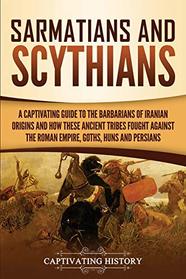From the harsh environment of the Steppes, Sarmatians and Scythians were wonderful horsemen and were the bane of infantry enemies. Their lifestyle was one of the pastoral nomad. The Sarmatians and Scythians shared a similar culture, the same language, common religious practices, and similar tribal organizations and clothing. These two groups did not write their own histories but were mentioned in dozens of historical sources. They roamed from Romania to what is now China.
It is believed that the Scythians practiced wagon nomadism (using wagons to transport goods during migrations) and came from Central Asia/Southern Siberia. They raided tribes in the Near East (including Western Asia, Turkey, and Egypt), and absorbed cultural aspects of the sedentary civilizations they admired.
The Sarmatians were part of the wider Scythian culture. Women held a unique role in warfare; they could rise in stature and influence due to their prowess on the battlefield. These cultures were devastated and/or assimilated by the Goths and Huns that overran their lands. in the 4th century.
It is believed that the Scythians practiced wagon nomadism (using wagons to transport goods during migrations) and came from Central Asia/Southern Siberia. They raided tribes in the Near East (including Western Asia, Turkey, and Egypt), and absorbed cultural aspects of the sedentary civilizations they admired.
The Sarmatians were part of the wider Scythian culture. Women held a unique role in warfare; they could rise in stature and influence due to their prowess on the battlefield. These cultures were devastated and/or assimilated by the Goths and Huns that overran their lands. in the 4th century.




